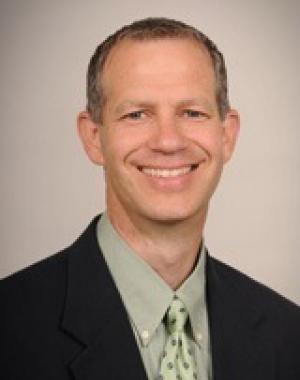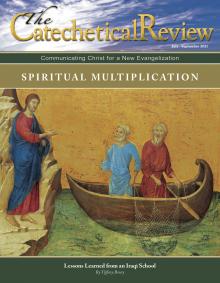Early Memories

I had a somewhat magical season of my life that has left lasting memories for me. I was only eleven or twelve. Up until that time, life had been marked by tragedy. My dad had been injured and left paralyzed, one of my sisters had tragically died, my mom had even suffered a nervous breakdown and was away from us for several months. But then all that changed. My dad was miraculously healed after nine years of suffering—that’s an article for another day! After his healing, the whole family moved to the mountains of Arizona for a couple of years. During that time, we camped, fished, and hiked. My dad had bought a couple of minibikes, and our favorite pastime was riding them all over the trails and streams around our mountain cabin, and always with a fishing rod. Sure, we had to go to school . . . but then we’d go right back to playing.
The greatest memories that stand out to me from those years are all the fishing outings and navigating the river. My brother and I got incredibly good at getting around. We learned all the best spots to fish, and we learned how to get across the river when needed. We even placed rocks in certain strategic places to help us get across a wider area—just under the surface of the water that we could use as a stepping-stone. At times during those years, other friends from Phoenix with kids our ages would come up to visit us. My brother and I would take them out adventuring and fishing, but would soon realize that they couldn’t go nearly as fast as we could. We had to teach them how to navigate the river and get from one side to the other. We had to show them where the narrow sections were that would allow you to cross and where the stepping-stones were.
There were also great dangers with the river. Some of the families that had lived in the mountains their whole life would tell stories of the tragic drownings, kids who had gotten caught in the rapids or in a particularly deep area and couldn’t get free of the current. They told us the places to avoid and where to be on guard for rough rapids. When our “city friends” would come up to visit, we wouldn’t even take them to those places.
Spiritual Multiplication – Invest in a Few
It’s funny how experiences like these can leave such a lasting impression. I still tell stories about those days, especially to my kids. You may be wondering, though, what this all has to do with spiritual multiplication. I look at spiritual multiplication a lot like crossing that river. I have gotten pretty good at it over the years now that I know where the best places to cross are, where the stepping-stones are, and where the danger areas are. When you become familiar with something, and do it over and over again, it starts to become natural.
When thinking about conversion and spiritual multiplication, we have to step back from the big picture and focus on the individual person. As parish staff, catechetical leaders, RCIA coordinators, youth ministers, we are often thinking about the big picture: our whole class, the large group, the overall schedule from September to May. We get locked into curricula and weekly planning in a way that can cause us to lose sight of the individual needs of the people we are serving. The goal is to get them “across the river,” navigating the steps along the path of conversion. There are many different articulations of that path, and all have certain merits. FOCUS uses the very simple Win-Build-Send model.[1] The US Bishops have articulated a four-step Encounter-Accompany-Community-Send model in their booklet Living as Missionary Disciples.[2] Sherry Weddell provides some clarity to the early steps with her five “thresholds of conversion.”[3] My purpose here is not to define those steps. My point is that you need to know them, to become so familiar with them that you can navigate them backward and forward, even in the dark. And most importantly, you need to be able to lead someone else across that pathway. That is real spiritual multiplication!
In my days of parish ministry, I tended to pursue some key relationships with two to three individuals. I’m actually still doing the same today. I invest in them, cultivate a relationship, and, over time, walk them through the stages of conversion. It typically takes a year or two depending on the person. Sometimes it works to invite them into a larger parish ministry, which establishes them in other relationships that support them in their growth. Helping a few individuals navigate conversion always informed and inspired my other ministry work. And as I grew in knowledge and understanding of the pathway, I could teach other volunteers to do the same. My encouragement to anyone in a ministry setting is to invest time in helping individuals along the path of conversion. As you do, you will get progressively better at helping whole groups of people navigate the same path.
Building a Strategy
I now work for an archdiocese with a hundred and six parishes. My staff and I have been wrestling the past couple of years with how to strategize for this kind of multiplication. How do you help people not just run programs but really do what we say we are doing: raising up missionary disciples? Our staff spent over two years working on this. There was an immense amount of effort, which included a new pastoral letter from our archbishop, Go Make Disciples: Building a Culture of Conversion and Discipleship,[4] as well as a new strategic pastoral plan, Vision 2030. We were laying out the path of what conversion and missionary discipleship should look like in our archdiocese, but it seemed to fall on deaf ears. We realized over time that we that were answering a question no one was really asking, giving a solution to a problem that most didn’t seem to see.
This past year we have discovered a book that I would highly recommend: From Christendom to Apostolic Mission.[5] This book has helped us immensely. One of the things it does well is make it painfully obvious what the real state of things are in the Church today and why we are where we are. “Ours is not an age of change, but a change of the ages!”[6] We’ve purchased copies for all our priests, deacons, seminarians, parish staff, schoolteachers, and other catechetical leaders. They are reading the book, lights are coming on, realization is setting in—wow, things have really changed! The COVID pandemic, though not the cause of this change or the problems that result from it, put a huge spotlight on the challenge. How is it that a full two-thirds of Catholics do not even believe in the real presence in the Blessed Sacrament anymore?[7] If you didn’t believe that statistic when the study came out, it’s certainly easier to see now when Church attendance dropped in most parishes to almost a third after the period of lock down. When churches opened back up, most priests thought they would need an overflow area at Mass to accommodate social distancing measures. I’m not aware of one parish in our entire archdiocese that had to use such a space.
Mass attendance isn’t the only indicator of the problem. When we get into difficult areas of teaching, why is it that so many are not holding to what the Church says is true? Where are all the real disciples?
Where Do We Go from Here? Three Critical Steps on the Path Forward
The question is now clear: what do we do? The tools and resources we are developing are finding a home. Yet still, there has been limited traction. We have found that many of those we are serving can’t even hear what we’re saying because they are not prepared. Through much prayer and many whiteboard sessions, we identified three very simple steps that we think are critical to that needed traction. I share them here in hopes they can serve you and your situation as well. These three steps are: rediscover your first love, create margin for mission, and embrace your calling.
Rediscover your first love – Every single one of us needs to get back in touch with our initial conversion, our “first love” for Christ, and the experience of his immense love for us. This is where the desire to grow comes from, and where a zeal for souls will start to burn in our hearts. The passion to share the faith with others grows cold and stagnant the more distant we get from this awareness. It is something we need to constantly call to mind as our primary source of motivation.
Create margin for mission – reconnecting with our first love will provide the motivation for this second step. But all the motivation in the world will not go anywhere if we have no time, no energy, no resources. Most of us are aimlessly busy with so many tasks that we can never seem to fully complete, juggling family, temporal responsibilities, ministry tasks, and meeting after meeting. The concept of mission falls flat because there is just no more room in our schedule. My challenge is this: reset—however you’d like to think of it. Stop the madness for a day and rethink your calendar. We need to get our lives oriented around mission, not try to fit mission into our busy lives. If you could design the perfect weekly schedule that allowed time for every “mission-critical” activity first, then made room for the other things that needed to be done, what would that calendar look like? This is what it is to “create margin.” The exercise requires letting some things go, prioritizing your activities, and being intentional about how you spend your time. It is a process of freeing up our time and energies and removing obstacles that prevent us from doing mission. People in the business world do this all the time to make more money. Why in the world are we not doing it to make more disciples?
Finally, embrace your calling – The mission statement of the Church can be found in Matthew 28:18–20. “Go and make disciples . . . of every nation.” That is our fundamental calling. And everything we do with our time needs to be retrofitted around that foundational priority. Catherine of Siena once said, “Be who God meant you to be and you will set the world on fire.” I think part of what she meant was this: If we all understood that we are called to share the faith with others and to help them “get across the river,” navigating the path of conversion, our hearts would come more and more alive. There obviously is a more unique expression of our individual, specific vocation that she is referring to, but as Pope St. John Paul II says, all of us are called to be a part of the mission of the Church.
The whole Church, Pastors and lay faithful alike, standing on the threshold of the Third Millennium, ought to feel more strongly the Church's responsibility to obey the command of Christ, “Go into all the world and preach the gospel to the whole creation” (Mk 16:15), and take up anew the missionary endeavour. A great venture, both challenging and wonderful, is entrusted to the Church—that of a re-evangelization, which is so much needed by the present world. The lay faithful ought to regard themselves as an active and responsible part of this venture, called as they are to proclaim and to live the gospel in service to the person and to society while respecting the totality of the values and needs of both.[8]
It has been an incredible journey for me the past year or so. Wrestling with all the challenges and trying to get traction with our efforts has been both frustrating and exhilarating. These three steps became like stepping-stones across a “river of challenges” for many of the people we were working with. Some were less familiar with how to navigate the path of conversion, and most were not even aware of these simple steps that needed to be taken just to get started. We’re getting some good traction now. We’re all praying that the world will be set on fire, at least in our little corner of it!
Jim Beckman is the Executive Director of Evangelization and Catechesis for the Archdiocese of Oklahoma City, and the Executive Director of ImpactCenter, a non-profit dedicated to Catholic leadership development. A graduate of Franciscan University and the Augustine Institute, Jim has served in various roles of leadership for national, regional, and local ministry over the years. He and his wife, Meg, live in Oklahoma City with their five children.
Notes
[1] Fellowship of Catholic University Students, “A Vision for Missionary Discipleship: Win-Build-Send,” https://focusequip.org/a-vision-for-missionary-discipleship-win-build-send/.
[2] United States Conference of Catholic Bishops Committee on Evangelization and Catechesis, Living as Missionary Disciples: A Resource for Evangelization (Washington, DC: USCCB, 2017), https://www.usccb.org/sites/default/files/flipbooks/living-as-missionary....
[3] Sherry A. Weddell, Forming Intentional Disciples: The Path to Knowing and Following Jesus (Huntington, IN: Our Sunday Visitor, 2017), 127–128, 129–130.
[4] Archbishop Paul S. Coakley, “Go Make Disciples! Creating a Culture of Conversion and Discipleship for the Archdiocese of Oklahoma City,” https://archokc.org/vision2030.
[5] University of Mary, From Christendom to Apostolic Mission: Pastoral Strategies for an Apostolic Age (Bismarck, ND: University of Mary Press, 2020).
[6] Ibid., 1.
[7] Gregory A. Smith, “Just One-Third of U.S. Catholics Agree with Their Church That Eucharist Is Body, Blood of Christ” Pew Research Center, https://www.pewresearch.org/fact-tank/2019/08/05/transubstantiation-euch....
[8] John Paul II, Christifideles Laici, no. 64.
This article originally appeared on pages 6-8 in the print edition.
Art Credit: Public domain image from Pexels.com.
This article is from The Catechetical Review (Online Edition ISSN 2379-6324) and may be copied for catechetical purposes only. It may not be reprinted in another published work without the permission of The Catechetical Review by contacting [email protected]


















